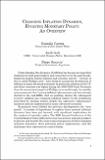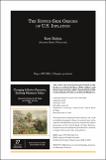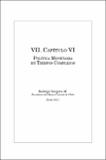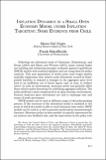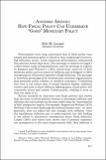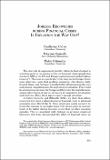Buscar
Mostrando ítems 31-40 de 77
Changing inflation dynamics, evolving monetary policy: an overview
Understanding the dynamics of inflation has become an important
challenge for both policymakers and researchers over the past decade.
Empirical models linking inflation and economic activity—versions of
the so-called Phillips curve—have failed to account for the behavior of
inflation in many ...
The supply-side origins of U.S. inflation
In recent years, we have not seen much of a negative correlation
between inflation, the time series plotted in figure 1, and measures of
resource slack, based on real GDP plotted in figure 2. This flattening
of the Phillips curve in many countries across the world has startled
monetary policymakers. ...
Comfort in floating: taking stock of twenty years of freely floating exchange rate in Chile
Chile offers an example of a country that has overcome the fear of floating by reducing balance-sheet mismatches; enhancing financial-market development; and improving monetary, fiscal, and political institutions; while strengthening policy credibility. Under the floating regime, Chile’s economic ...
Política monetaria en tiempos complejos
Durante los últimos años la economía chilena ha sufrido shocks importantes que han implicado un gran desafío para la conducción de la política monetaria. El fin del súper ciclo de las materias primas y condiciones financieras internacionales más estrechas junto con una caída importante en los niveles ...
Inflation dynamics in a small open economy model under inflation targeting: some evidence from Chile
Following the influential work of Christiano, Eichenbaum, and Evans (2005) and Smets and Wouters (2003), many central banks are building and estimating dynamic stochastic general equilibrium (DSGE) models with nominal rigidities and are using them for policy analysis. This new generation of sticky ...
Inflation targeting in financially stable economies: has it been flexible enough?
The international financial crisis and Great Recession of 2008- 09 called for a range of significant policy measures by central banks beyond aggressive interest rate cuts. Measures have ranged from improving international coordination to purchasing local private loan portfolios and direct intervention ...
Anchors aweigh: how fiscal policy can undermine 'good' monetary policy
Policymakers have long understood that if fiscal policy runs amuck and monetary policy is forced to raise seigniorage revenues big inflations result. Latin American policymakers understand this outcome better than most. This message is implicit in Cagan’s (1956) initial study of hyperinflation and the ...
Jobless recoveries during financial crises: is inflation the way out?
The slow rate of employment growth relative to that of output is a sticking point in the recovery from the financial crisis episode that started in 2008 in the U.S. and Europe (a phenomenon labeled 'jobless recovery'). The issue is a particularly burning one in Europe where some observers claim that ...
International aspects of the zero lower bound constraint
Large negative aggregate demand shocks can drive down an economy’s equilibrium real interest rate and if the central bank is committed to stabilizing inflation monetary policy may be hampered by the zero lower bound on nominal interest rates –the economy may be in a 'liquidity trap.' The policy dilemma ...
Sterilized foreign exchange interventions under inflation targeting
Inflation targeting needs exchange rate flexibility. If the policy interest rate is geared to achieving the inflation target the central bank must be willing to accept the resulting exchange rate. Simply put if the central bank has both an inflation target and an exchange rate target the private sector ...

